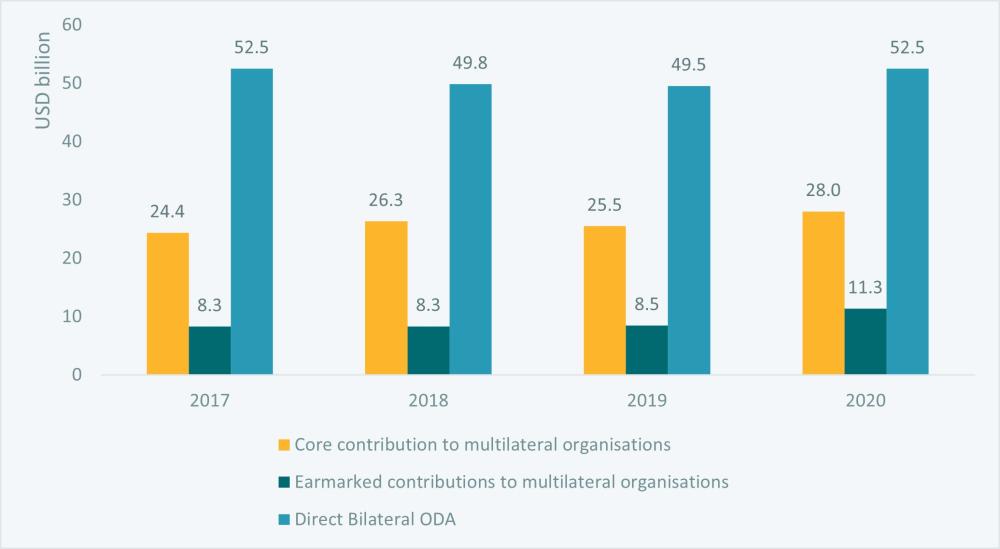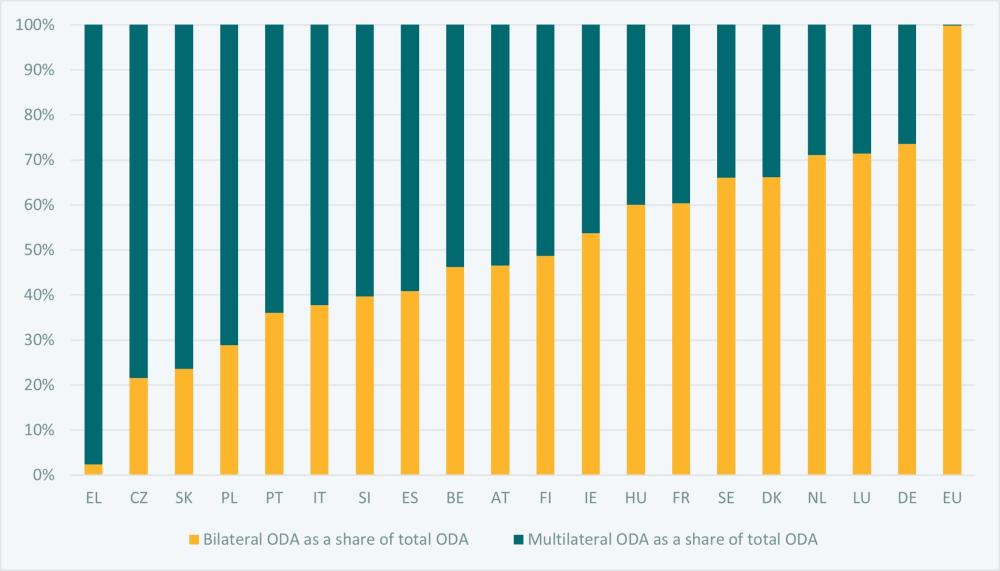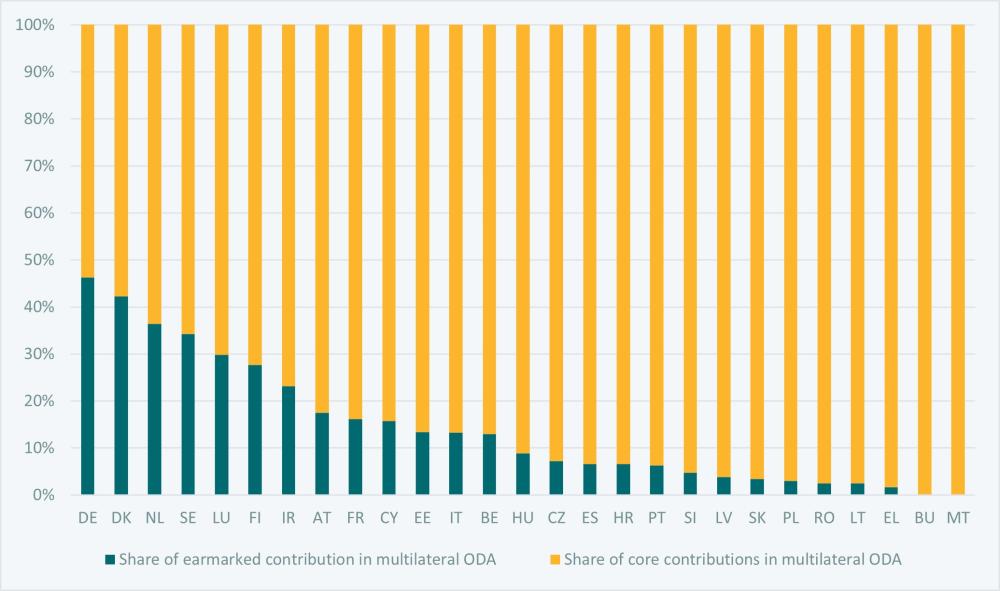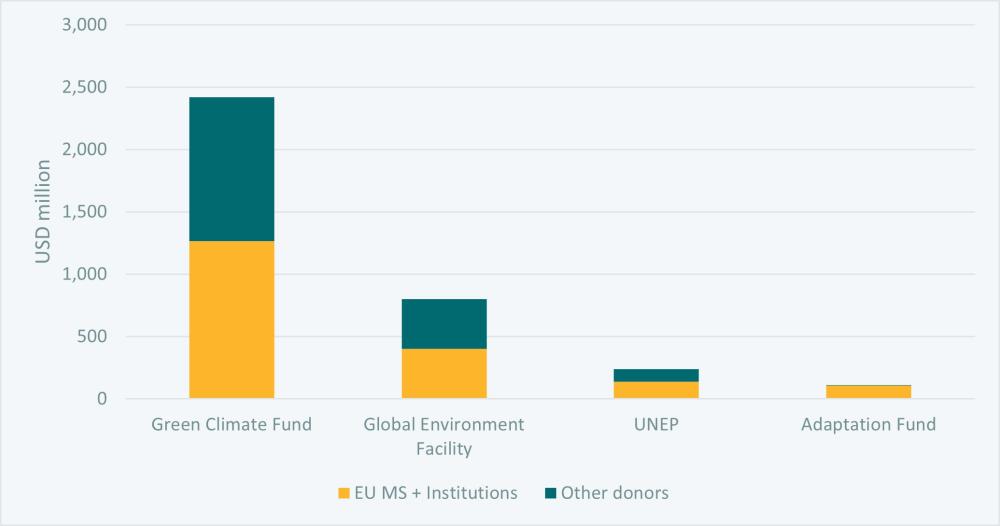Recommended

Blog Post
The case for multilateralism could not be clearer. It points to the many global problems that the world faces, which even the most powerful states cannot handle on their own. Containing global pandemics and mitigating climate change are tasks that require global cooperation. And yet, the future of the multilateral system is looking increasingly uncertain.
The big takeaway from the 2022 edition of the OECD’s Multilateral Development Finance report is that, while multilateral finance reached a record high in 2020, the increase is nowhere near enough given the magnitude of the challenges ahead. The system continues to be contested, fragmented and suffers from a “lack of whole-of-system accountability.”
COVID-19 presented a key juncture to accelerate collective action to promote global development. The pandemic not only presented an urgent transboundary challenge that simultaneously affected economies and health systems in all countries, but quickly became an acute development crisis, undoing years of progress in reducing poverty and enhancing human development. The multilateral system was created precisely to address situations like this. And yet, although the volume of multilateral finance increased substantially in 2020, the share of official development finance (ODA) allocated as core support to the multilaterals by donors who form part of the OECD’s Development Assistance Committee remained stable, at 27 percent of gross ODA disbursements.
European Union (EU) Member States collectively offer over half the contributions to multilateral organisations. They are essential to the system and its much-needed reform. In this blog, we review EU contributions to the multilaterals over the last few years and examine how they are impacting the fragmentation of the system.
The EU and the multilateral system
In an era of global polycrisis, the EU and its Members States have remained committed to multilateralism. The 2021 Joint Communication of the European Commission on multilateralism insisted that “the challenges of the 21st century call for more, not less multilateral governance and rules-based international cooperation.” This is illustrated by the Team Europe response to COVID-19. As shown in Figure 1, EU Member States’ core support for multilateral organisations increased from US$25.5 billion in 2019 to US$28 billion in 2020—a 10 percent increase—while earmarked contributions to multilateral organisations over which donors retain some degree of control (e.g. flows earmarked for a specific country, project, sector, ...) increased by 32 percent, from US$8.5 billion to US$11.3 billion.
Figure 1: EU Member States’ contribution to multilateral organisations and bilateral ODA, Gross Disbursement, Constant prices (2020), 2017-2020
Source: OECD CRS
In 2021, 11 EU Member States out of 19 who report to the OECD’s Development Assistance Committee (DAC) channelled over half of their assistance through the multilateral system as core support, as shown in Figure 2. While Member States with small development programmes such as Greece and the Czech Republic channelled more than three quarters of their ODA to multilateral organisations (primarily the EU Institutions), those with more established and larger development programmes, such as Luxembourg or Germany, prioritized bilateral channels. The same is true for earmarked assistance.
Figure 2: Bilateral and Multilateral ODA as a share of total ODA, EU DAC donors, 2021
Source: OECD CRS
Note: Multilateral ODA in this graph only includes core contributions to multilateral organisations.
Earmarking or multi-bi aid, often described as the ‘bilateralization’ of multilateral institutions, has stemmed as a result of the desire for political influence, frustrations with the slow pace of governance reforms and the emergence of new global challenges. OECD data suggest earmarked assistance constitutes 16 percent of total DAC ODA and just under 30 percent of total multilateral spending. Among EU Member States, Germany earmarks almost half of its multilateral assistance, followed by Denmark, the Netherlands, Sweden and Luxembourg and the largest recipient of EU Member State earmarked funding is the World Food Programme, followed by the World Bank and the United Nations Development Programme (UNDP).
Figure 3: Share of earmarked and core contributions in multilateral ODA among EU Member States, 2020
Source: OECD CRS
In the report, the OECD recommends concentrating on areas where the multilateral system can have the greatest impact, such as climate change. As show in Figure 4, in 2020, EU Member States represented more than half of all contributions to the four main multilaterals with an exclusive climate mandate (the United Nations Environment Programme, the Adaptation Fund, the Global Environment Facility and the Green Climate Fund).
Figure 4: EU and other donors’ contributions to climate-focused multilateral institutions, Gross Disbursements, USD millions, 2020
Source: OECD CRS
Fragmented and contested
Donors’ increasing tendency to earmark their contributions has continued its upward trend despite repeated warnings from the OECD of its negative effects on the system, not least the direct effect on the capacity of the multilateral organisations to deliver on their mandates. Fragmentation is being caused by the stresses that the system has and continues to suffer from. Shareholders of multilateral organisations have struggled to accommodate global shifts in economic and political weight and the pace of reform has been too slow as the UN and other multilaterals struggle to handle old and new threats. And so, parallel institutions—regional or informal alternatives and coalitions of the willing—have emerged, as have new models for financing global challenges through mechanisms that pool and allocate resources to enhance the supply of global public goods.
However, the problem lies not only in the multilateral institutions themselves and their “lack of whole-of-system accountability,” but in the shareholders who are faced with the juxtaposition of putting country first, and multilateral cooperation in the interests of all. For donors who are espousing narratives of national interests in the provision of global public goods, this would suggest greater use of bilateral channels or multi-bi (earmarked channels) that are better conduits for seeking control, accountability, visibility and measurable value for money from their aid programme.
In the absence of a functioning world order, mini-lateral and regional forms of cooperation are growing. In climate finance in particular, European policymakers are increasingly looking to supplement the UN’s collective approach with smaller initiatives such as the ‘Loss and Damage Fund’, the Breakthrough Agenda (a UK-led clean technology initiative signed by the EU and 41 countries) and the ‘climate club’ that Germany put forward during its presidency of the G7. The Team Europe Initiatives (TEIs) themselves are forms of mini-lateral cooperation. See for example the recently announced flagship initiatives on Water, Energy and Climate, and on Digital Connectivity made up of the EU, seven Member States, the European Investment Bank (EIB) and the European Bank for Reconstruction and Development (EBRD) all pooling their finance.
By mixing collective and like-minded initiatives, Europeans are adopting a kind of twin-track strategy on multilateral cooperation. They do not assume or require multilateral initiatives with universal memberships, nor do they push for a pick-and-choose transactional plurilateralism. Rather, they are calling for alliances and partnerships of the like-minded, based on values that work hand-in-hand with interests.
Whither multilateral cooperation?
From the European perspective, the future of multilateral cooperation looks mixed. Germany’s multilateral contributions will decline from now until 2024 and are then projected to increase back to current levels. This year was an exceptional year for Sweden with an increase in multilateral spending from 2021, but going forward, Sweden’s contributions are projected to decline. France, on the other hand, is projecting a large increase through financial institutions and multilateral development banks, but a decrease to others like UN agencies. The Netherlands is looking to increase multilateral allocation.
Europe, overall, still veers largely towards the view of resuscitate and reinforce the multilateral system and its ability to deliver. But there are many who argue that the multilateral system needs a major overhaul to prevent further backlash and accommodate new goals.
Disclaimer
CGD blog posts reflect the views of the authors, drawing on prior research and experience in their areas of expertise. CGD is a nonpartisan, independent organization and does not take institutional positions.









